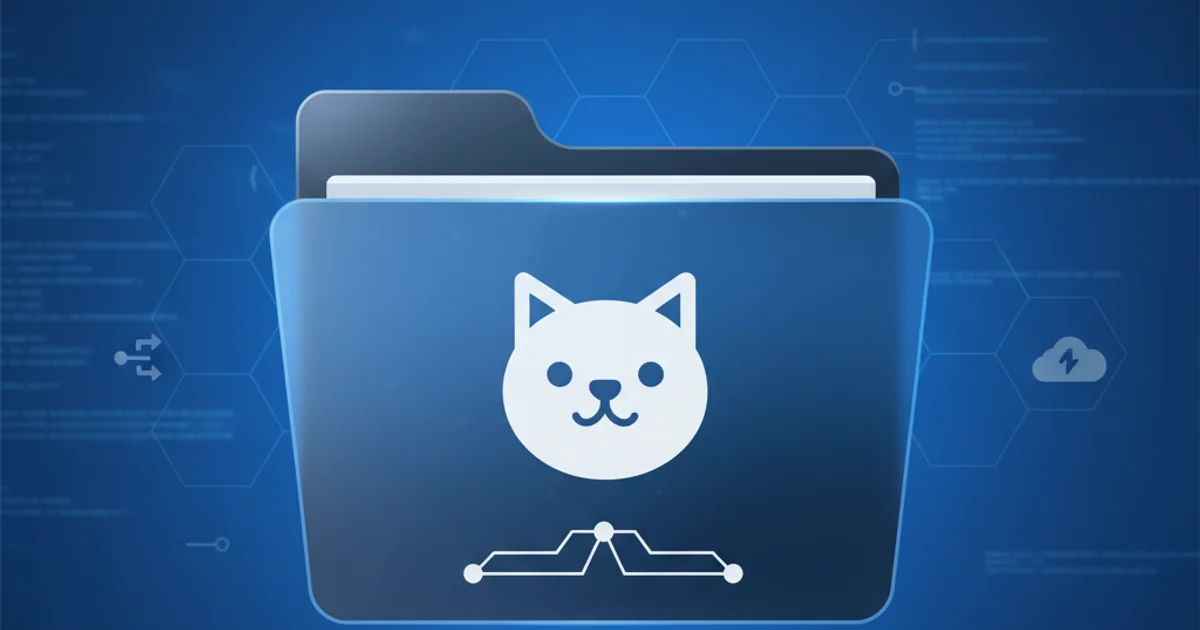How do I create a folder in a GitHub repository?
Categories:
How to Create a Folder in a GitHub Repository

Learn various methods to create new folders (directories) within your GitHub repositories, both directly through the web interface and using Git commands locally.
Organizing your GitHub repository with a clear folder structure is crucial for project maintainability and collaboration. Whether you're adding new features, separating documentation, or structuring your code, knowing how to create folders efficiently is a fundamental skill. This article will guide you through the different ways to achieve this, catering to both direct web-based creation and local Git workflows.
Understanding GitHub's Folder Creation Logic
GitHub's web interface doesn't have a direct 'Create Folder' button. Instead, it infers folder creation when you create a new file and specify a path that includes a directory name. For example, if you create a file named docs/README.md, GitHub automatically creates the docs folder if it doesn't already exist, and places README.md inside it. This behavior is consistent across both the web interface and local Git operations.
flowchart TD
A[Start: User wants to create a folder] --> B{Choose Method}
B --> C[Method 1: GitHub Web Interface]
B --> D[Method 2: Local Git Commands]
C --> C1["Navigate to Repository"]
C1 --> C2["Click 'Add file' -> 'Create new file'"]
C2 --> C3["Type 'folder_name/file_name.ext'"]
C3 --> C4["Add content & Commit new file"]
C4 --> C_End[End: Folder created with file]
D --> D1["Clone/Navigate to Local Repo"]
D1 --> D2["Create folder locally: `mkdir folder_name`"]
D2 --> D3["Create file inside: `touch folder_name/file_name.ext`"]
D3 --> D4["Add, Commit, Push: `git add .`, `git commit -m 'Add new folder'`, `git push`"]
D4 --> D_End[End: Folder created and pushed]Workflow for creating folders in GitHub
Method 1: Creating a Folder via the GitHub Web Interface
This is the simplest method for quick additions, especially for small files or when you don't have your local development environment set up. Remember, you cannot create an empty folder directly; it must contain at least one file.
1. Navigate to Your Repository
Open your web browser and go to the GitHub repository where you want to create the new folder.
2. Initiate New File Creation
On the repository's main page, click the 'Add file' dropdown button, then select 'Create new file'.
3. Specify Folder and File Name
In the file name field, type the desired folder name followed by a forward slash /, and then the name of a file to place inside it. For example, to create a folder named my-new-folder with a file placeholder.txt inside, you would type my-new-folder/placeholder.txt. GitHub will automatically recognize my-new-folder as a new directory.
4. Add Content and Commit
Add some content to the file (even a single character is enough). Then, scroll down, provide a commit message (e.g., 'Create my-new-folder and placeholder file'), and click 'Commit new file'.
.gitkeep file inside it. This is a common convention to ensure Git tracks the directory, even if it contains no other files. For example: my-new-folder/.gitkeep.Method 2: Creating a Folder Using Local Git Commands
For more complex projects or when you're already working locally, using Git commands is the standard and most flexible approach. This method allows you to create multiple folders and files before pushing your changes to GitHub.
1. Clone or Navigate to Your Local Repository
If you haven't already, clone the repository to your local machine using git clone <repository_url>. If it's already cloned, navigate to the repository's root directory in your terminal or command prompt.
2. Create the Folder Locally
Use the mkdir command to create your new directory. For example: mkdir my-new-folder.
3. Add a File (Optional but Recommended)
Git does not track empty directories. To ensure your new folder is tracked, create at least one file inside it. A common practice is to create a .gitkeep file: touch my-new-folder/.gitkeep.
4. Stage, Commit, and Push Your Changes
Add the new folder and its contents to your staging area: git add my-new-folder. Then, commit your changes: git commit -m "Add new folder: my-new-folder". Finally, push your local changes to the remote GitHub repository: git push origin main (or master, depending on your branch name).
git clone https://github.com/your-username/your-repo.git
cd your-repo
mkdir new-feature-folder
touch new-feature-folder/.gitkeep
git add new-feature-folder
git commit -m "Add new-feature-folder with .gitkeep"
git push origin main
Example Git commands to create and push a new folder
.gitkeep file is a convention, not a Git feature. Any file will make Git track the directory. If you plan to immediately add other files, you don't need .gitkeep.